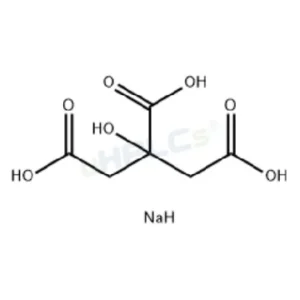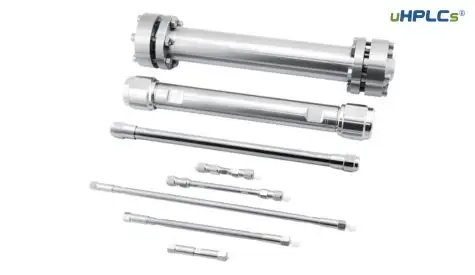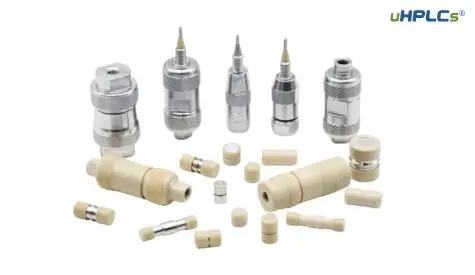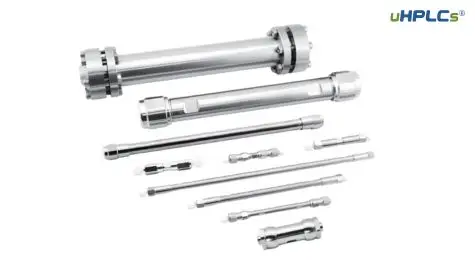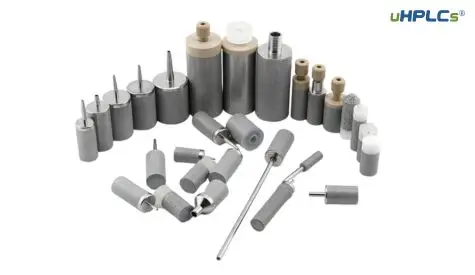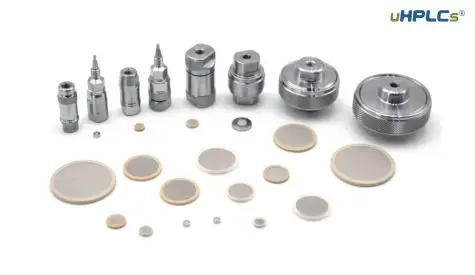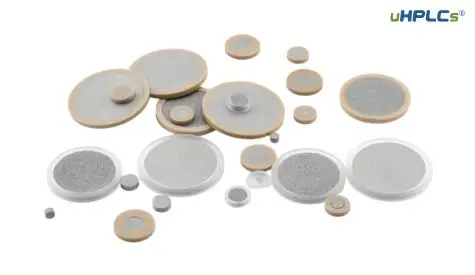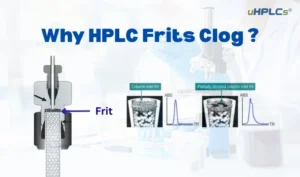How to Choose the Right HPLC Column Frit (Complete Guide)
(Pore Size, Material, Geometry & Column Compatibility)
High-Performance Liquid Chromatography, better known as HPLC, is a critical tool in the world of analytical chemistry. It allows for the separation, identification, and quantification of components in a mixture, playing a vital role in various industries, including pharmaceuticals, environmental monitoring, and food testing. While there are several elements that contribute to the successful operation of an HPLC system, one particular component – the HPLC column frit – is often overlooked. However, as any seasoned chromatographer would agree, choosing the right column frit can significantly impact the performance and lifespan of your HPLC column.
So in shorter, Selecting the right HPLC column frit is essential for maintaining stable pressure, ensuring proper flow distribution, and achieving high-efficiency chromatographic separation. The wrong frit can cause peak distortion, pressure spikes, bed disruption, or leaking of packing material.
So If you need a quick overview of all frit sizes, pore size options, and materials, you can also refer to our HPLC Frits Product Page.
In this blog, we aim to shed light on the importance of the HPLC column frit, understand its role in maintaining column efficiency, and provide some key insights that will guide you in choosing the right frit for your HPLC column.
What is HPLC Column Frit
For Short to Say, The HPLC column frit, a seemingly humble component, serves a crucial function in your HPLC system. But, what exactly is it?
The column frit in an HPLC column is a filter, typically made from stainless steel or porous polymer. Its primary role is to hold the stationary phase (tiny particles or beads coated with a chemical compound) in place while allowing the mobile phase (a liquid or gas) to pass through. The frit acts as a barrier, preventing the stationary phase particles from escaping the column while still ensuring the free flow of the mobile phase.
Or we can say an HPLC frit is a porous metal or polymer disc installed at the inlet and outlet of the column. It acts as:
- A filter that prevents stationary-phase particles from escaping
- A flow distributor that ensures uniform liquid distribution
- A protective barrier that stabilizes the packed bed
- A checkpoint that reduces particulate contamination
For detailed definitions and frit geometry types, visit our HPLC Frit Definition Page.
Types of HPLC Frits
There are several types of frits available in the market, and they can differ based on their material, pore size, and design. These differences are not arbitrary, as the type of frit you choose can affect the performance of your HPLC column and the quality of your chromatography results. It’s important to understand these nuances when selecting an HPLC column frit.
When it comes to the importance of the frit, consider this analogy: an HPLC system without a proper frit is like a car engine without a good oil filter. Just as the filter prevents damaging particles from harming the engine, the frit in an HPLC column keeps the column functioning smoothly and efficiently by holding the stationary phase in place and preventing blockages.
Stay with us as we delve deeper into the factors you should consider when choosing an HPLC column frit, and understand how this simple component can influence your HPLC performance.
Common Types of HPLC Column Frits and Their Characteristics
| Frit Type | Description | Typical Pore Sizes | Material Options | Best Used For | Key Advantages |
|---|---|---|---|---|---|
| Standard Disc Frit | Flat circular frit installed at inlet/outlet of analytical columns | 0.2–20 µm | 316L SS / PEEK | Analytical HPLC (2.1 / 3.0 / 4.6 mm) | Uniform flow, minimal dead volume, industry standard |
| Frit Cap (Integrated Frit + Holder) | Frit bonded with a support cap for easier assembly | 0.5–20 µm | 316L SS / PEEK | OEM columns, semi-prep setups | Easy installation, consistent alignment, strong bed support |
| Large-Diameter Prep Frit | Oversized frits for 10–50 mm ID prep columns | 10–40 µm | 316L SS | Preparative chromatography | High flow capacity, withstands high load and pressure |
| UPLC Ultra-Fine Frit | Ultra-small pore frit for sub-2 µm particles | 0.2–0.5 µm | 316L SS | UPLC systems | Prevents particle leakage, supports ultra-high pressure |
| PEEK Bio-Compatible Frit | Polymer frit suitable for metal-sensitive analyses | 2–10 µm | PEEK | Protein, peptide, ion-sensitive samples | No metal interaction, excellent chemical compatibility |
| DAC Column Frit | Reinforced frit for dynamically compressed prep columns | 10–40 µm | 316L SS | DAC prep systems, large-scale purification | High mechanical strength, stable under compression |
| Dual-Density Frit | Two-layer frit with gradual density change | 1–10 µm | 316L SS | High-pressure analytical columns | Reduced clogging, smoother flow distribution |
| Concave Surface Frit | Slightly curved surface to improve flow distribution | 0.5–5 µm | 316L SS | Analytical / Semi-prep | Minimizes central bed compression, improves peak shape |
Factors You Should to Consider When Choosing an HPLC Column Frit
Selecting an appropriate HPLC column frit is a task that requires careful consideration. It’s not just about picking any frit;
it’s about selecting the one that best suits your column and the nature of your analysis.
Here are the primary factors that you need to bear in mind:
1. Frit Material:
The frit material should be chosen based on the nature of the mobile phase used.
While stainless steel frits are popular due to their durability and resistance to pressure, they might not be compatible
with certain types of solvents. For such instances, PEEK (Polyether ether ketone) or other polymer-based frits are recommended.
Material Selection: Stainless Steel vs PEEK
✔ 316L Stainless Steel Frits
– Highest mechanical strength
– Suitable for high-pressure HPLC/UHPLC
– Broad chemical compatibility
– Best for general analytical and preparative columns
✔ PEEK Frits
– Fully biocompatible
– No metal ion interaction
– Recommended for protein, peptide, or ion-sensitive samples
See the full compatibility chart (Agilent, Waters, Shimadzu) on our HPLC Frit Compatibility Guide.
2. Pore Size:
Pore size is the most important parameter because it determines particle retention and backpressure.
The pore size of the frit should be small enough to hold back the stationary phase particles,
yet large enough to allow the unimpeded flow of the mobile phase.
The pore size is usually selected based on the particle size of the stationary phase. For instance,
if you’re using a column with a 5µm stationary phase, a frit with a 2µm pore size would typically be appropriate.
Recommended Pore Sizes
| Packing Particle Size | Recommended Frit Pore Size | Column Type |
|---|---|---|
| 1.7–2 µm | 0.2–0.5 µm | UPLC |
| 3–5 µm | 2 µm | Analytical |
| 10 µm | 5–10 µm | Semi-prep |
| 15–40 µm | 10–40 µm | Prep / DAC |
For complete pore size charts, see our👉 HPLC Frit Selection Guide.
3. Compatibility with the Column and Particle Size:
The frit should be compatible with the HPLC column in terms of its design and dimensions.
Additionally, the frit should be suitable for the particle size of the stationary phase.
A frit that’s too large may allow particles to escape, causing column degradation over time.
Conversely, a frit that’s too small could lead to excessive backpressure and slow flow rates.
Always match the frit diameter directly to your column inner diameter:
| Column ID | Frit Diameter |
|---|---|
| 2.1 mm | 2.1 mm |
| 3.0 mm | 3.0 mm |
| 4.6 mm | 4.6 mm |
| 7.8 mm | 7.8 mm |
| 10 mm | 10 mm |
| 20–30–50 mm | Large prep frits |
A full list of standard sizes is available here: HPLC Frit Dimensions & Specs.
4. Resistance to Pressure:
HPLC analysis often involves high pressures, and the frit must be able to withstand these conditions.
Ensure that the frit material and design are capable of handling the pressure ranges involved in your specific HPLC method.
5. Frit Geometry (Disc, Cap, Prep, DAC)
Types of Frits
- Disc frits: Standard for analytical columns
- Frit caps: Integrated frit + support ring design (OEM friendly)
- Large prep frits: For 10–50 mm ID columns
- DAC frits: For dynamically compressed prep columns
Each geometry serves different column types and flow requirements.
More examples can be found at our 👉 HPLC Frits Overview Page.
6. Chemical Compatibility
- Organic solvents → Stainless steel frits
- Aqueous & acidic buffers → PEEK frits
- Metal-sensitive samples → PEEK recommended
7. Common Problems Caused by Incorrect Frit Choice
| Problem | Likely Cause |
|---|---|
| Pressure spikes | Pore size too small / clogged frit |
| Peak tailing | Poor flow distribution / wrong frit geometry |
| Bed collapse | Frit pore size too large |
| Particle leakage | Frit not retaining stationary phase |
| Short column life | Unsupported bed surface |
If you encounter these issues, consider upgrading the frit →
https://uhplcs.com/hplc-frit/
8. Recommended Frit Selection Table (Engineer Quick Guide)
| Column Type | Recommended Frit | Pore Size | Material |
|---|---|---|---|
| UPLC | Ultra-fine disc frit | 0.2–0.5 µm | 316L SS |
| Analytical HPLC 4.6mm | Standard disc frit | 2 µm | SS / PEEK |
| Semi-prep | Large disc frit | 5–20 µm | SS |
| Preparative | High-strength prep frit | 10–40 µm | SS |
More selection options: HPLC Frit Selection Guide
The Impact of HPLC Column Frits on Chromatographic Performance
Till Now, We Want You TO Know More About Influence of the HPLC column frit on chromatographic performance is substantial and often underestimated. Here’s how it can affect your results:
1. Backpressure Control:
The frit plays a vital role in controlling the backpressure in an HPLC system. If the frit’s pore size is too small, it could lead to high backpressure, causing strain on the HPLC pump and leading to poor chromatographic performance.
2. Prevention of Column Degradation:
The primary function of the frit is to hold the stationary phase particles within the column. Without an efficient frit, particles could escape, leading to column degradation and shorter column life.
3. Resolution and Efficiency:
An appropriate frit ensures that the mobile phase flows uniformly through the column. This uniform flow is crucial for maintaining peak shape, resolution, and overall chromatographic efficiency.
4. Frit Blockages and Column Performance:
Over time, frits can become blocked by particulate matter, either from the sample or the mobile phase. Such blockages can increase backpressure, distort peak shapes, and reduce column efficiency. Regular maintenance and cleaning of HPLC column frits can prevent these issues and ensure the column’s long-term performance.
In the following sections, we’ll explore practical tips for maintaining and troubleshooting HPLC column frits and provide insights into how you can extend the life of your HPLC columns.
Maintaining and Cleaning HPLC Column Frits
Ensuring the longevity and efficient performance of your HPLC system involves more than just the occasional run of a cleaning solvent through your column. It includes careful maintenance of the integral components, such as the column frit. Here are some tips on maintaining and cleaning your HPLC column frits:
1. Regular Backflushing:
Backflushing your column can help remove particulates that have built up in the frit. It’s a quick and easy preventive maintenance task that can significantly extend the life of your column frit. Just remember, only backflush if your column manufacturer approves of it.
2. Use of Guard Columns:
Consider using guard columns to protect your main column and its frit from contaminants. These can be particularly beneficial when dealing with dirty or complex samples.
3. Use Clean Solvents and Samples:
Ensuring your samples and solvents are free from particulates can help to prevent frit blockages. If necessary, filter your samples before injection and always ensure your solvents are HPLC grade.
4. HPLC Column Frit Replacement:
At times, despite regular cleaning, a column frit may need to be replaced due to severe blockages or damage. In such cases, follow your manufacturer’s instructions for HPLC column frit replacement to ensure you do not cause further damage to your column.
Troubleshooting Common HPLC Column Frit Issues
In an ideal world, our HPLC systems would always run flawlessly. But in the real world, issues arise, and it’s important to know how to troubleshoot common problems related to the HPLC column frit:
1. Increased Backpressure:
Increased backpressure is often the first sign of a column frit issue. It could be due to blockages from particulates or the use of a frit with too small a pore size. Regular cleaning and correct frit selection based on your column and stationary phase can help prevent this issue.
2. Poor Peak Shapes:
Issues with peak shapes could be due to non-uniform flow through the column, possibly caused by a blocked or damaged frit. Regular maintenance, appropriate frit selection, and use of guard columns can help to maintain peak shapes.
3. Reduced Column Efficiency:
A reduction in column efficiency could indicate a problem with the frit. If the frit is blocked or damaged, it could prevent uniform flow of the mobile phase, reducing the column’s performance. Regular cleaning or replacement of the frit can help to restore efficiency.
4. Frit Blockages:
Frit blockages can occur due to particulates in the sample or solvent, or from stationary phase particles. Using clean, filtered samples and solvents, and appropriate frits for your stationary phase can help prevent these blockages.
5. Damaged Frits:
If the frit is damaged, it might not hold back the stationary phase particles, leading to column degradation. Using a frit with the correct specifications and material for your HPLC system, and treating your column with care can prevent damage to the frit.
In conclusion, understanding the role and importance of the HPLC column frit can significantly improve your chromatographic performance and extend the life of your HPLC columns. Regular maintenance and appropriate selection of frits are key to ensuring the best performance from your HPLC system.
How to Replace an HPLC Column Frit
While cleaning the frit is an essential maintenance task, sometimes the column frit will need to be replaced entirely. This may be necessary if the frit is damaged, excessively blocked, or simply worn out due to age. In these cases, replacing the frit can improve column performance and extend its lifespan.
Here’s a step-by-step guide on how to replace an HPLC column frit:
1. Safety First:
Ensure that you are wearing appropriate safety gear, including gloves and eye protection. Some of the chemicals used in HPLC can be hazardous, so it’s important to take precautions.
2. Depressurize and Disconnect:
Depressurize the HPLC system and disconnect the column from the system. This can usually be done by turning off the pump and unscrewing the column from the system.
3. Remove the Old Frit:
The frit is usually located at either end of the column, held in place by a screw or similar mechanism. Unscrew or otherwise remove this to free the old frit. Take care not to damage the column in the process. You might need a specific tool for this step, depending on your column model.
4. Inspect the Column:
Before you install the new frit, it’s a good idea to inspect the inside of the column. Look for any damage or contamination that might have caused the old frit to fail. If you see anything concerning, it may be necessary to clean or repair the column before proceeding.
5. Install the New Frit:
Place the new frit in the column, making sure it’s properly aligned. The exact procedure for this will vary depending on your specific column model. However, the frit should fit snugly into the column, with no gaps that could allow particles to bypass it.
6. Reattach the Column:
Once the new frit is securely in place, reattach the column to the HPLC system. Ensure the connections are secure, but do not overtighten as this could damage the column or the system.
7. Prime and Test:
Prime the HPLC system to ensure the new frit is working correctly. If the pressure in the system is stable and you’re seeing a good baseline on your chromatograms, then the frit replacement has been successful. If not, it may be necessary to recheck the frit and column installation.
But You’d better to Remember, replacing an HPLC column frit is a delicate task and should be done with utmost care. If you feel unsure or uncomfortable with any step of the process, do not hesitate to reach out to a service professional for assistance.
FAQ
1. What is the function of an HPLC column frit?
The HPLC column frit serves as a physical barrier at both ends of the column that retains the stationary phase (packing material) within the column while allowing the mobile phase to flow through. It prevents the packing material from leaking out of the column while it is under pressure during analysis.
2. What materials are commonly used in the manufacturing of HPLC column frits?
HPLC column frits are typically made of stainless steel or PEEK (polyether ether ketone). Stainless steel frits are durable and have excellent chemical resistance, making them suitable for most applications. PEEK frits, on the other hand, are resistant to corrosion and commonly used in bioanalytical applications where bio-inertness is crucial.
3. What is the typical pore size of an HPLC column frit?
The pore size of an HPLC column frit can range from 0.5 to 10 micrometers, depending on the particle size of the packing material. The frit pore size must be smaller than the packing particle size to retain the packing material effectively while allowing the mobile phase to flow through.
4. How often should the HPLC column frit be replaced?
The frequency of frit replacement depends on the type of samples analyzed, the frequency of use, and the maintenance practices followed. In general, frits should be replaced when they become blocked or damaged, or when performance issues cannot be resolved through cleaning.
5. Can HPLC column frits be cleaned?
Yes, HPLC column frits can often be cleaned to remove any blockages and restore performance. Cleaning can be done using a variety of solvents and procedures, depending on the type of contamination present. However, if cleaning does not resolve the issues or if the frit is damaged, it will need to be replaced.
6. What are the steps involved in the manufacturing of an HPLC column frit?
HPLC column frits are usually manufactured through a sintering process. This involves heating a powdered material (such as stainless steel or PEEK) under pressure until the particles adhere to each other, forming a solid, porous structure. The material is then cut into discs of the appropriate size and inspected for quality before being fitted into the column.
7. What factors are important when selecting an HPLC column frit?
When selecting an HPLC column frit, it is crucial to consider the material of the frit, its pore size, and its compatibility with the column and the mobile phase. The frit material should be chemically resistant and compatible with the mobile phase used in your analysis. The pore size should be suitable for the particle size of your column’s packing material.
8. How can a blocked HPLC column frit affect chromatographic performance?
A blocked frit can significantly impair chromatographic performance. It can cause an increase in system pressure, leading to the possibility of system damage or failure. It can also impact the flow of the mobile phase, leading to poor peak shape, longer retention times, and reduced reproducibility.
9. What are some common signs that an HPLC column frit needs to be replaced?
Common signs that an HPLC column frit may need to be replaced include a significant increase in system pressure, poor peak shape, longer retention times, or a loss of column efficiency. These issues may initially be addressed by cleaning the frit, but if they persist after cleaning, the frit may need to be replaced.
10. Can HPLC column frits be reused or recycled?
Whether an HPLC column frit can be reused or recycled largely depends on the material of the frit and the nature of its contamination. Frits made from robust materials like stainless steel might be cleaned and reused provided the blockage or contamination can be effectively removed without damaging the frit. However, the cleaning process can be time-consuming and might not always be successful, particularly with heavy contamination. Furthermore, the cleaning process could potentially introduce new contaminants if not carried out correctly.
As for recycling, it depends on local facilities and regulations. Stainless steel frits could theoretically be recycled along with other metal waste, but you should always consult with your local waste management or recycling center to understand the best practices.
In general, due to the potential impact on chromatographic performance and the relatively low cost of replacement frits, many labs opt to replace rather than clean or recycle used frits. Replacement is a surefire way to restore the original column performance.
Remember, maintaining your HPLC column frit and acknowledging when it’s time for replacement is crucial to ensure reliable and consistent results in your chromatographic analysis. Always follow the manufacturer’s guidelines for maintenance and care of your HPLC system components, and don’t hesitate to reach out to technical support if you’re facing persistent issues.
Conclusion
Choosing the correct HPLC frit ensures stable backpressure, optimal peak shape, and long column life.
Pore size, geometry, material, and column ID all play significant roles in frit performance.
Absolutely, no matter your level of expertise or your specific questions for Column Frit or Other HPLC Products, uHPLCs team is always here ready to help. If you’re left wondering about any aspect of HPLC column frits, whether it’s selection, installation, cleaning, or replacement, please don’t hesitate to get in touch. We’re committed to providing our clients with the highest level of support and technical knowledge.
To explore all diameters, pore sizes, materials, and OEM customization options, visit: HPLC Frits – Stainless Steel & PEEK Series https://uhplcs.com/hplc-frit/
For any questions or assistance, you’re welcome to reach us directly at sales@uhplcs.com. Don’t let any doubt linger. Our team is eagerly awaiting to clear up all your questions and help you keep your HPLC system operating at its peak performance. So go ahead, drop us a line today!


